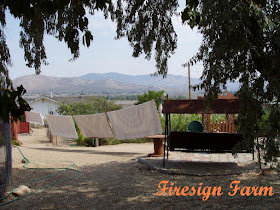On October 31, 1864, despite falling far short of the required number of residents, Nevada became the smallest territorial population to be recognized as a state. Towards the end of the Civil War, President Lincoln's political advisers thought that bringing another northern state into the Union would boost morale and add support for his re-election. In order to get the proposed state's Constitution to the President quick enough to be included in the national election, the document was transmitted by telegraph - the longest and most expensive transmission in history. Thus, Nevada became the "Battle Born" state (also called the Silver State, for the wealth of the Comstock Lode, as well as neighbor to the Golden State, California).
Nevada still celebrates its Admission Day, here in Carson City, the state capital. When I first moved here, it was still celebrated on October 31st; the local kids would trick-or-treat on October 30th to avoid being out on the streets after the adults had been partying all day. About 10 years ago, it was decided to move Nevada Day to the last Saturday in October to allow for easier attendance for those living farther away. This year, Aries isn't working, so he could join me out and about for the festivities.
The day starts early. Highway 50/395, the main drag through town running in front of the state Capitol, is closed off for blocks.
Hot air balloons lift off in the still early-morning air, a pancake breakfast is served at the Governors Mansion, and the fun run finishes in front of the crowds awaiting the start of the parade.

The parade kicks off when real Top Gun fighter jets (based at the Fallon Naval Air Station, 50 miles east of here) do a flyby down the length of the parade route. The two-plus hours long parade entries run the gamut from politicians to local Cub Scout troops,
Burning Man to the Bunny Ranch, and just about every school marching band in the state.

After the parade, per tradition, we head over to the Golden Nugget for the free Chili Feed, hosted this year by our Lieutenant Governor. This year, our chili was dished up by Josh Romney, son of presidential candidate Mitt Romney (Nevada is one of the early caucus states, the only one in the west, so most of the national campaigns already have a presence here, and in Las Vegas in the south).

After lunch plus some visiting with friends, we headed over to the Beard Contest in the Legislative Plaza between Capitol, Legislature, and the Supreme Court Buildings. That's always a rather raucous affair, especially the Virginia City contingent (that almost always gets the Most Bearded Community award).
After that, we wander through the crowd watching the hard rock single jack drilling contest - men pounding away for 10 minutes, with sledge hammer and drill bit to see who can drill the deepest hole in a block of granite - but that doesn't hold my interest for very long. The street party in front of the Old Globe Saloon is also hopping, but by now a bit too sloppy for my tastes. We decide to head over to the Governors Mansion for the open house. On the way, we stop by a private porch party, and visit some more - this really is still just a small town.

The line for the open house stretches most of a block, but moves quite quickly. Inside, Reno Rodeo Beauty Queens shake hands with Nevada's First Family, before it's our turn. The youngest daughter tells me she's going to be an angel for Halloween, as she hands me a commemorative coin.

Governor Sandoval has opened up the entire Mansion to the public for the day. A portrait of a clean-shaven President Lincoln hangs in the state dining room, set with silver cups and flatware made from ore from the Comstock mines. Boots, a tuxedo cat, sits in the Governor's office chair behind the desk, watching with typical cat-like aplomb as the crowd files through. The line snakes up the stairs, where we can peek into their private quarters as well. A desert tortoise lives in a terrarium in one child's bedroom; a guinea pig's cage is in one bathroom.
We make one last stop at the Brewery Arts Center to check out a Nevada artists' display and reception. It's been a long, but fun, day, and my feet are tired. We head over to where we parked the car early this morning, and head home.

















































